Micron has launched the Crucial T705 PCIe Gen5 NVMe SSD, the direct successor to the T700. Available in capacities ranging from 1TB to 4TB, the T705 accommodates various storage needs while introducing several enhancements for improved performance and reliability.
The T705 delivers improved performance, reliability, and suitability for demanding applications such as gaming, content creation, and workstation tasks. At the heart of the T705 is the Phison PS5026-E26-52, a Gen5 controller that debuted in early 2022 and deployed in other high-performance client-grade SSDs like the Corsair MP700 Pro.
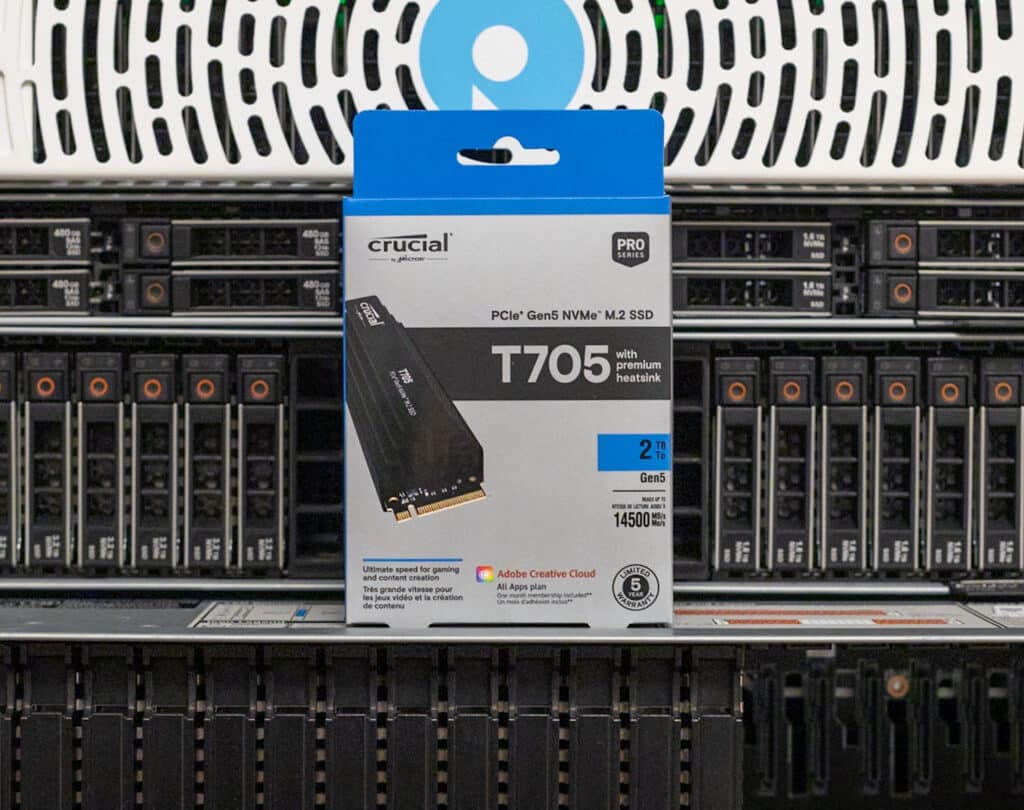
Crucial T705 Features and Performance Profile
Compared to its predecessor, the Micron claims the T705 offers notable improvements. Sequential reads are boosted by 18 percent, while sequential writes see an 8 percent increase. Random reads and writes are also enhanced by 4 percent and 20 percent, respectively. These improvements are possible due to integrating Micron’s latest 232-layer NAND technology and firmware optimizations. Integrating Microsoft DirectStorage optimization alongside Phison I/O+ technology also holds significant potential for enhancing overall performance.
The performance of the T705 depends on the drive capacity. Sequential read/write speeds range from 13,600MB/s and 10,200MB/s for the 1TB variant to 14,500MB/s and 12,700MB/s for the 2TB variant. Random read/write speeds vary from 1,400K IOPS and 1,750K IOPS for the 1TB variant to 1,550K IOPS and 1,800K IOPS for the 2TB model. Endurance ranges from 600TBW (1TB) to 2,400TBW (4TB).
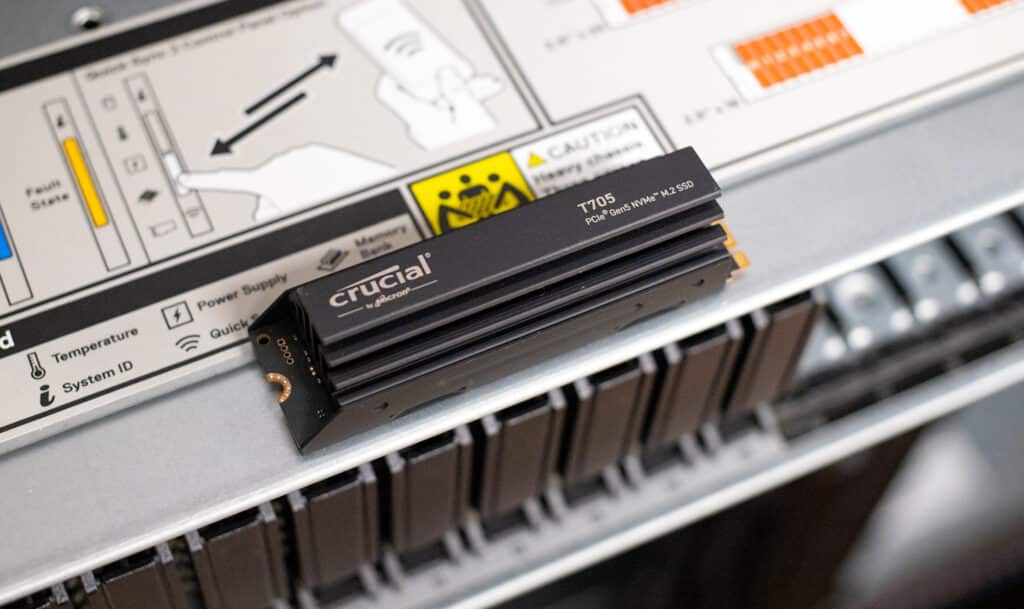
Additionally, the Crucial T705’s backward compatibility with PCIe Gen3 and Gen4 slots ensures seamless integration with older systems, expanding its usability and versatility across various hardware configurations. Though given the price tag, we don’t anticipate many will bother trying this out.
Crucial T705 Advanced Features
Micron has also included a range of advanced features in the T705 to help improve reliability and data integrity. For example, Dynamic SLC caching optimizes performance by allocating approximately 11 percent of the total user capacity for caching purposes. At the same time, its adaptive thermal protection ensures optimal operating temperatures, with thermal throttling starting at 81˚ C and protective shutdown at 90˚ C.
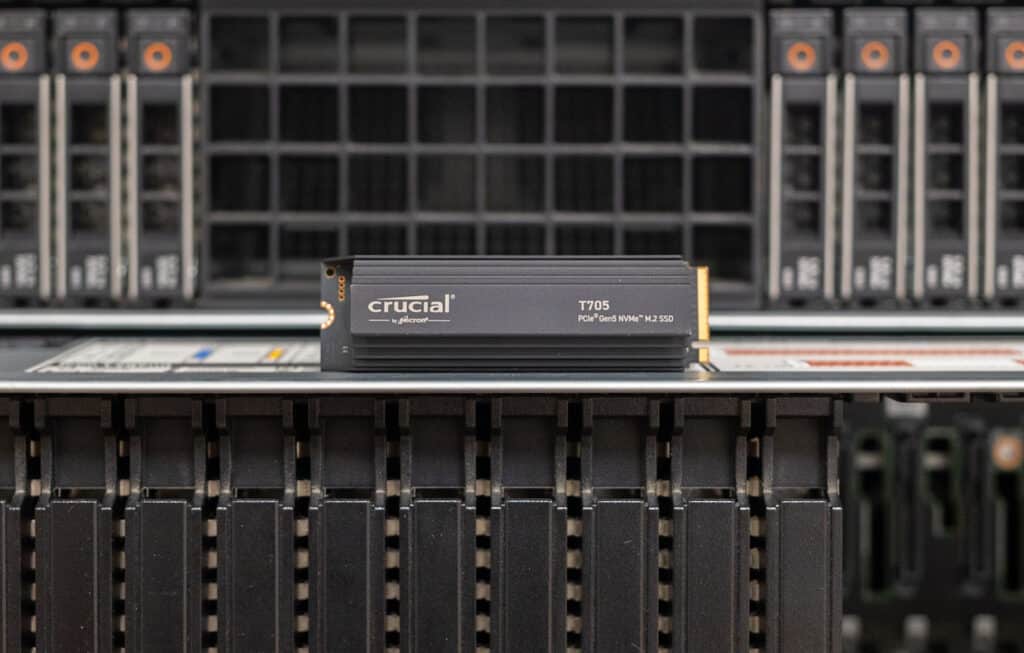
The T705 also features redundant array of independent NAND (RAIN) and multi-layer data integrity algorithms, which help safeguard data against potential errors and corruption. Moreover, active garbage collection, TRIM support, and error correction code (ECC) contribute to data integrity and system stability, while built-in security measures, including AES256 encryption and TCG OPAL 2.01 support, ensure data confidentiality and integrity, providing users with peace of mind.
Crucial T705 Heatsink
Some Crucial T705 Gen5 SSD models are available with a premium aluminum and copper heatsink designed to enhance heat dissipation and improve peak performance during demanding workloads. Because heatsinks dissipate heat without needing noisy fans or liquid cooling solutions, users often get quieter and more reliable thermal management.
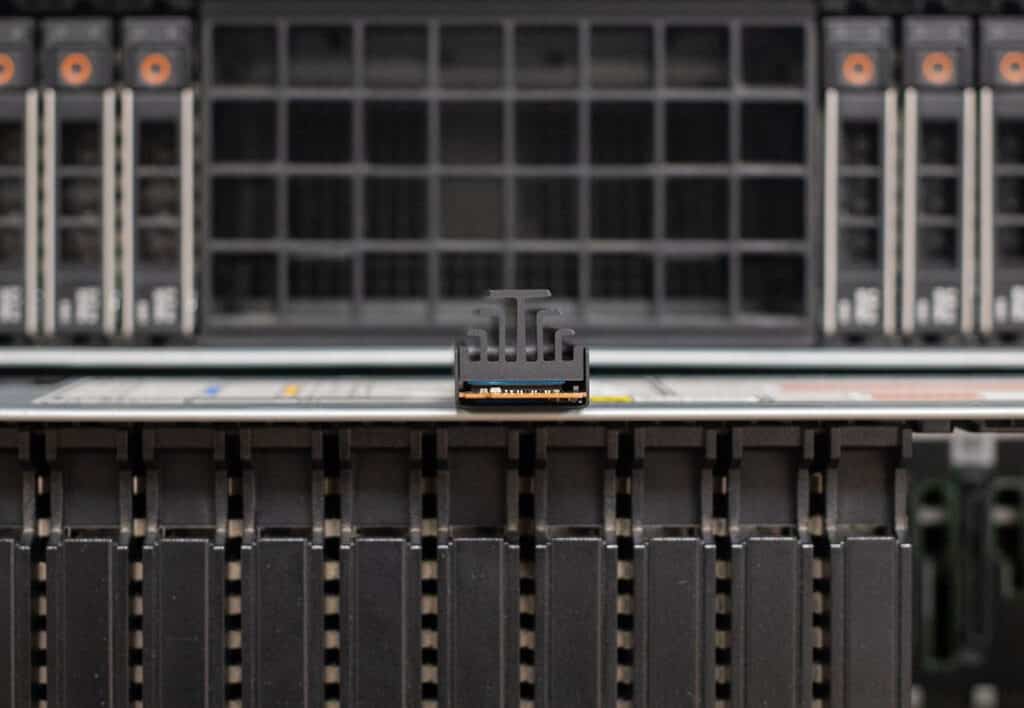
Additionally, for users who prioritize aesthetics, a limited-edition version of the T705 is available with a very slick-looking white heatsink, which will fit nicely into white-themed motherboards and PC components. The combination of advanced thermal management and design makes the Crucial T705 Gen5 SSD an excellent choice for enthusiasts and professionals seeking both performance and style in their storage solutions.
Crucial T705 Pricing and Warranty
Backed by a 3-year warranty, the Crucial T705 costs $240 to $730, depending on the capacity and heatsink. Here’s a full pricing rundown:
| Model Number | Model Name | Pricing |
| CT1000T705SSD3 | Crucial T705 1TB | $239.99 |
| CT2000T705SSD3 | Crucial T705 2TB | $399.99 |
| CT4000T705SSD3 | Crucial T705 4TB | $689.99 |
| CT1000T705SSD5 | Crucial T705 1TB w/heatsink | $259.99 |
| CT2000T705SSD5 | Crucial T705 2TB w/heatsink | $439.99 |
| CT4000T705SSD5 | Crucial T705 4TB w/heatsink | $729.99 |
| CT2000T705SSD5A | Crucial Limited Edition 2TB T705 w/ white heatsink | $483.99 |
Crucial T705 Specifications
| Specification | Capacities | ||
| 1TB | 2TB | 4TB | |
| Sequential Reads (MB/s) | 13,600 | 14,500 | 14,100 |
| Sequential Writes (MB/s) | 10,200 | 12,700 | 12,600 |
| Random Reads (K IOPS) | 1,400 | 1,550 | 1,500 |
| Random Writes (K IOPS) | 1,750 | 1,800 | 1,800 |
| Endurance (TBW) | 600 (1TB), 1,200 (2TB), 2,400 (4TB) | ||
| NAND | Micron 232-layer 3D TLC NAND | ||
| Interface | PCIe 5.0 and NVMe 2.0 | ||
| Features | |||
| Design and Compatibility | |||
|
|||
| Optimized Performance and Compatibility | |||
|
|||
| Advanced Features: | |||
|
|||
Crucial T705 SSD Performance
For this review, we will be looking at the 2 TB model while comparing it to the following SSDs:
- Samsung 990 PRO (2TB) (Gen4)
- ADATA Legend 970 (2TB)
- Corsair MP700 Pro (2TB)
- Seagate FireCuda 540 (2TB)
- Gigabyte Aorus 12000 (1TB)
- Solidigm P44 Pro (2TB)
For testing, we use two platforms. The consumer test platform supports PCIe Gen4/Gen5 SSDs. It is sometimes leveraged for lighter consumer-based tests such as BlackMagic DiskSpeed Test, CrystalDiskMark, and our primary platform, a Dell PowerEdge R760, which overlaps our enterprise tests. Serial Cables supplied an 8-bay PCIe Gen5 JBOF for testing for U.2/U.3, M.2, and E1.S/E3.S drives. This allows us to test all current and emerging drive types on the same test hardware.
Dell PowerEdge R760 Configuration
- Dual Intel Xeon Gold 6430 (32 cores/64 threads, 1.9GHz base)
- 1TB DDR5 RAM
- Ubuntu 22.04
VDBench Workload Analysis
When benchmarking storage devices, application testing is best, and synthetic testing is second. While not a perfect representation of actual workloads, synthetic tests help baseline storage devices with a repeatability factor that makes it easy to compare competing solutions. These workloads offer a range of testing profiles ranging from “four corners” tests and common database transfer size tests to trace captures from different VDI environments.
These tests leverage the common vdBench workload generator, with a scripting engine to automate and capture results over a large compute testing cluster. This allows us to repeat the same workloads across various storage devices, including flash arrays and individual storage devices. Our testing process for these benchmarks fills the entire drive surface with data, then partitions a drive section equal to one percent of the drive capacity to simulate how the drive might respond to application workloads. This differs from full entropy tests, which use 100 percent of the drive and take them to a steady state. As a result, these figures will reflect higher-sustained write speeds.
Profiles:
- 4K Random Read: 100% Read, 128 threads, 0-120% iorate
- 4K Random Write: 100% Write, 64 threads, 0-120% iorate
- 64K Sequential Read: 100% Read, 16 threads, 0-120% iorate
- 64K Sequential Write: 100% Write, 8 threads, 0-120% iorate
- VDI Profiles
Starting with 4K random read, the Crucial T705 hit a solid 1.02 million IOPS at 124.7ms for second place and just behind the Solidigm P44 Pro.
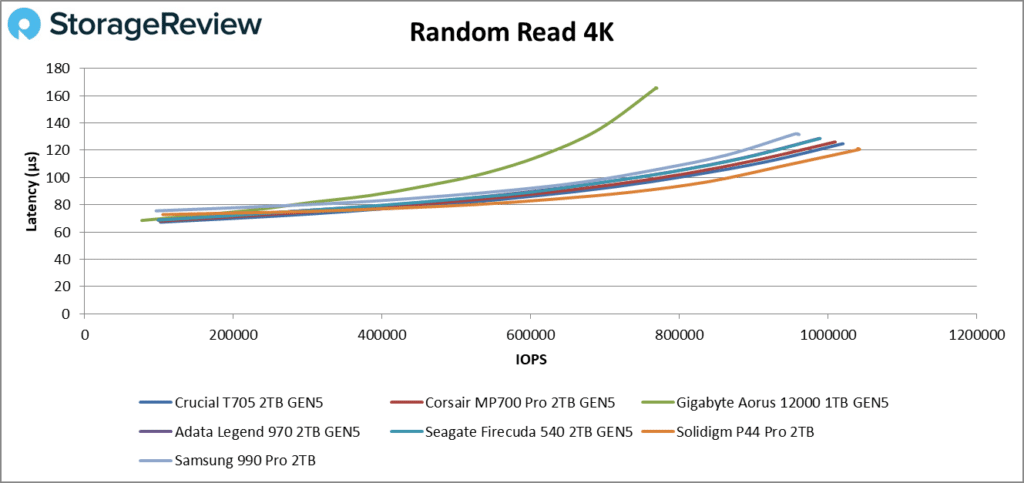
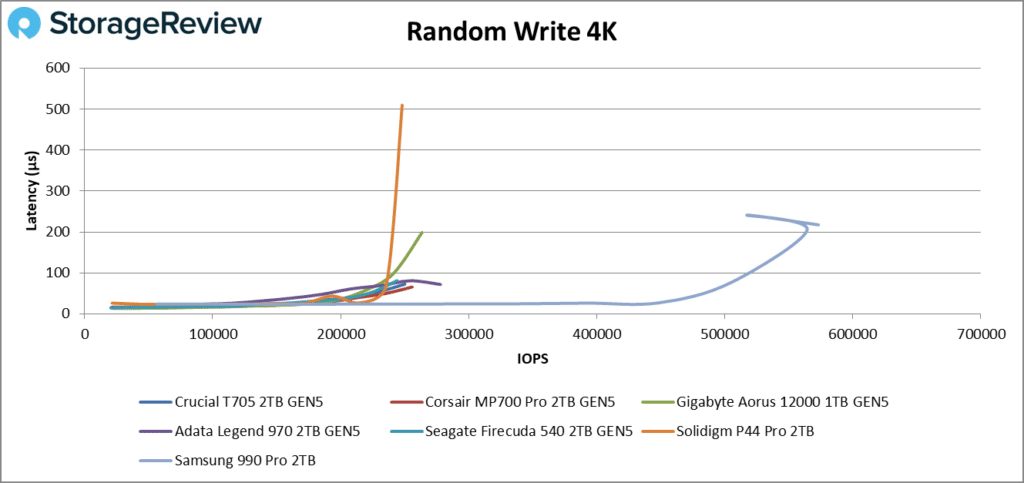
When switching to the sequential read 64K workload, the Crucial T705 took the lead by a significant margin, hitting 9.86GB/s (158K IOPS) at 202.8ms. The next best drive was the Corsair, which could only hit 8GB/s.
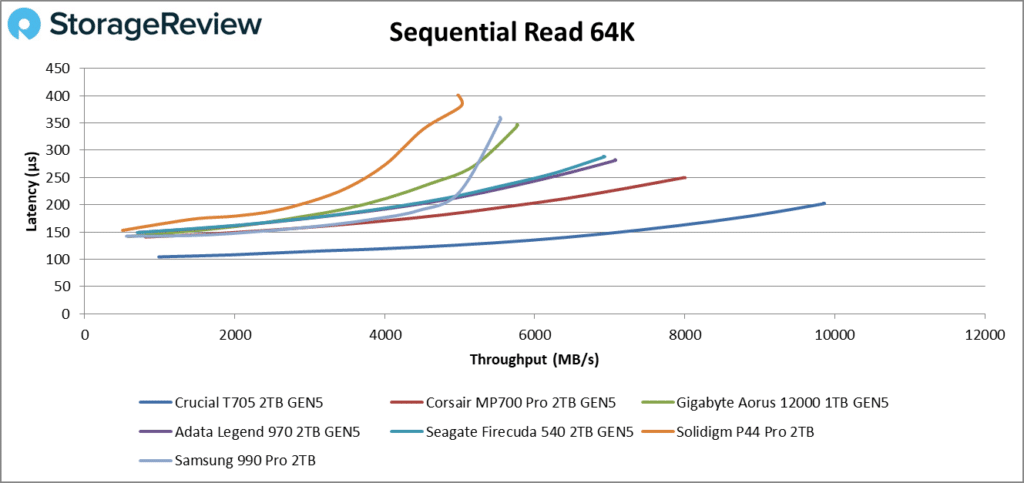
The Crucial T705 fell back a few spots in sequential writes, hitting a max of 18K IOPS at 855.2ms for 5th place. Again, nothing could come close to the Samsung 990 PRO regarding write performance.
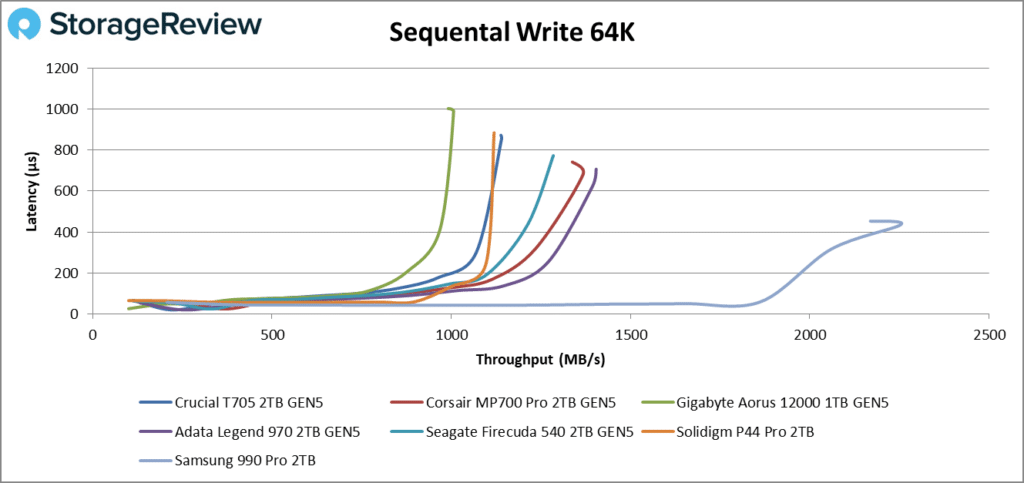
Next, we looked at our VDI benchmarks, designed to tax the drives further. These tests include Boot, Initial Login, and Monday Login. Starting with boot, the Crucial T705 was back in first place with 236K IOPS at 143ms.
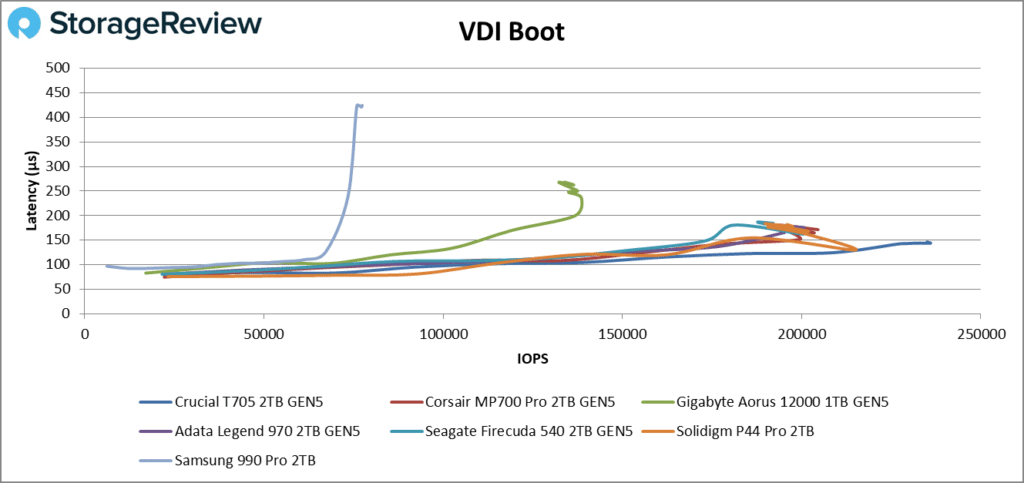
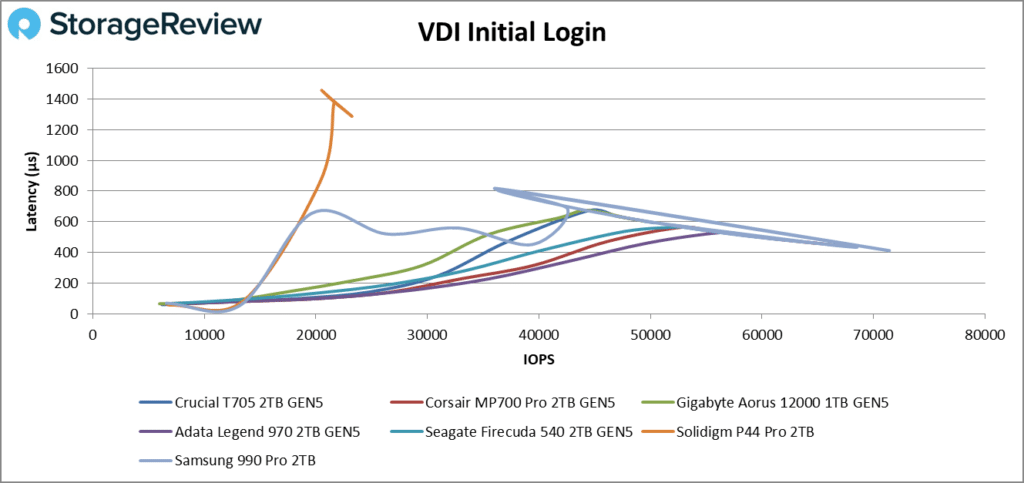
Finally, we have the VDI Monday Login benchmark, concluding the test at 48K IOPS with a latency of 333.6ms for 3rd among the tested client-grade SSDs.
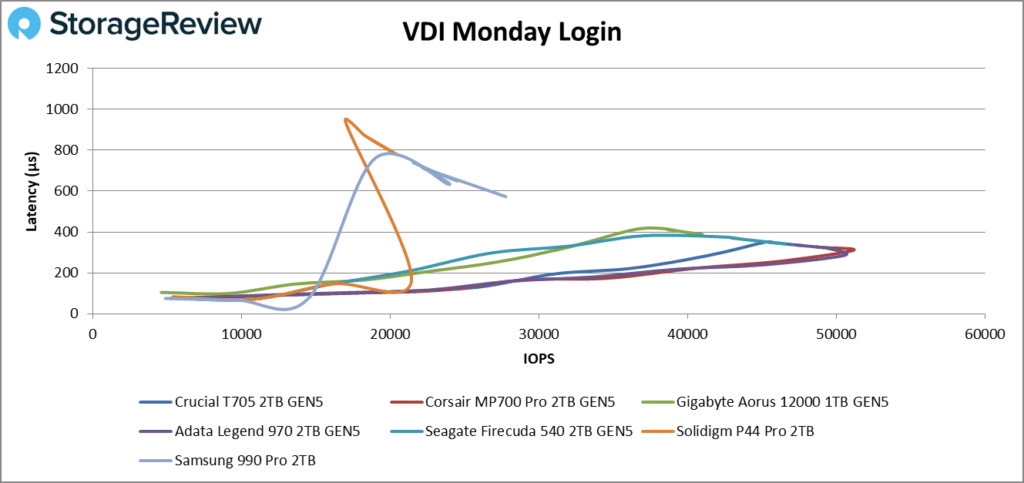
Crucial T705 BootBench
BOOT-BENCH-1 is a workload profile adopted by OCP to profile SSDs designed for server boot duty. While this is intuitively a job for enterprise SSDs, client SSDs are often selected for their performance, capacity, and cost combination. The boot drive issue is germane to hyperscalers and server and storage system providers, as they face similar challenges.
This boot workload executes an intense test plan that fills the entire drive with writes before testing a read-heavy workload sequence. For each test, it performs a 32K random read async operation alongside a 15MiB/s synchronous 128k random write and a 5MiB/s synchronous 128k random write/trim background workload. The script starts with the random-read activity at a 4-job level and scales up to 256 jobs at its peak. The final result is the read-operations performed during its peak run.
The OCP goal for this benchmark is a pass/fail at 60K read IOPS. Most drives we test will far exceed the minimum, but the results are instructive regardless.
The Crucial T705 SSD achieved an impressive 302,496 IOPS during the test, surpassing the OCP goal for this benchmark. This makes it the first Phison Gen5 SSD to pass (with very competitive results), making it a compelling choice for server and storage system providers seeking high-performance, reliable SSD solutions.
| SSD | Read IOPS |
| Crucial T705 | 302 496 IOPS |
| Sk hynix Platinum P41 | 220,884 IOPS |
| WD SN850X | 219,883 IOPS |
| Solidigm P44 Pro | 211,999 IOPS |
| Fantom VENOM8 | 190,573 IOPS |
| Samsung 990 Pro | 176,677 IOPS |
| Sabrent Rocket 4 Plus | 162,230 IOPS |
| ADATA Legend 970 (Gen5) | 65,632 IOPS |
| Corsair MP700 Pro (Gen5) | 51,521 IOPS |
| Predator Storage GM7 | 35,302 IOPS |
Crucial T705 CrystalDiskMark Speed Test
We performed a lighter-weight test on the Crucial T705 to demonstrate another metric of its speeds. CrystalDiskMark’s higher queue depth (compared to BlackMagic) allows us to showcase the best-case scenario for the drive. Any real-world performance differences would likely be negligible.
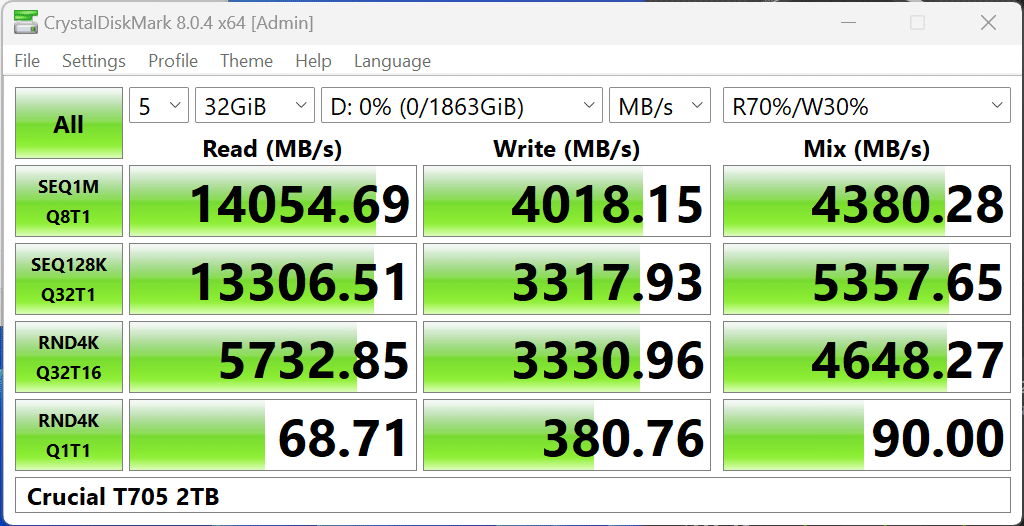
Here, the Crucial T705 performed very well in reads with 14GB/s in reads, with writes hitting around 4GB/s.
Crucial T705 BlackMagic DiskSpeed Test
Lastly, we measured performance inside a Windows 11 environment on our consumer test platform via the popular Blackmagic test. The new Crucial T705 hit a solid 9.82GB/s read, and 8.67GB/s write.
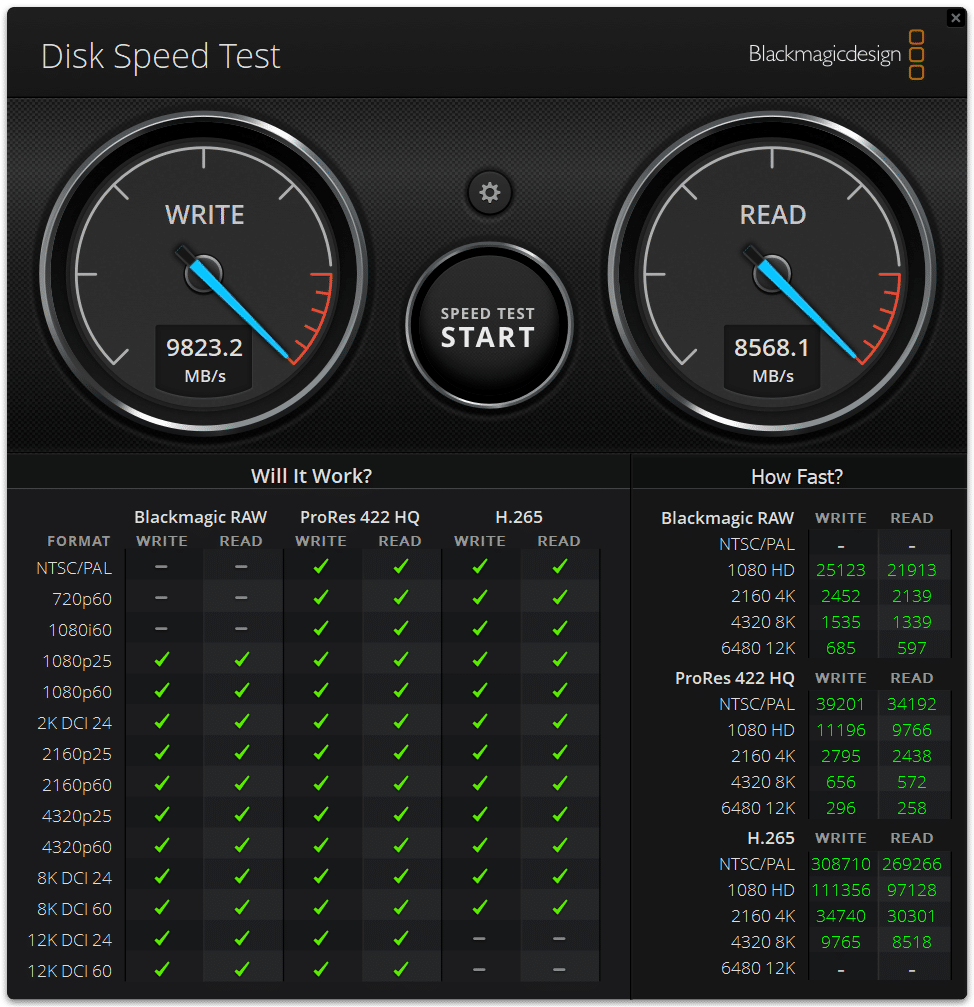
Conclusion
The Crucial T705 PCIe Gen5 NVMe SSD is a remarkable addition to the high-performance storage arena. Micron’s latest offering showcases exceptional capabilities in handling intensive tasks and is the best-performing Gen5 SSD in bootbench. Its performance metrics, particularly in areas like 4K random reads and sequential read speeds, underscore its capability to excel in demanding environments, from gaming to professional workstations. Coupling all this with the drive’s robust feature set positions it as a premium choice for consumers who demand speed and reliability. Moreover, it is complemented by a heat-dissipating heatsink and the option of an elegantly designed all-white variant, adding a touch of sophistication to its visual appeal.
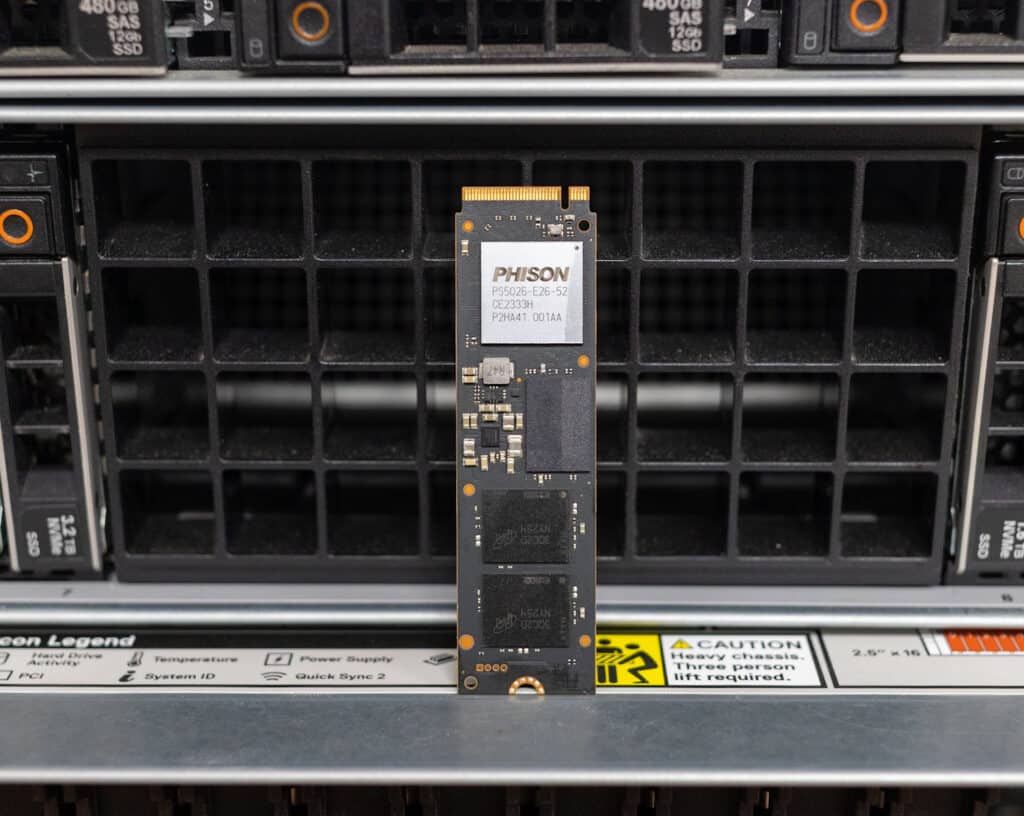
Despite its standout read performance, the T705’s premium pricing ($240/1TB and $730/4TB) will be a deterrent to most buyers, especially in the face of leading Gen4 SSDs still being pretty racy in everything but heavy read workloads. And while it sets a new high bar for Gen5 SSDs, the drive’s one-sided story leaves a bit to be desired. Still, the T705 finally delivers on the promise of Gen5 read performance, which is where most consumers will press the drive. On that front, it delivers well and those looking to drive every drop of read performance from their SSD will be grinning ear-to-ear.




 Amazon
Amazon